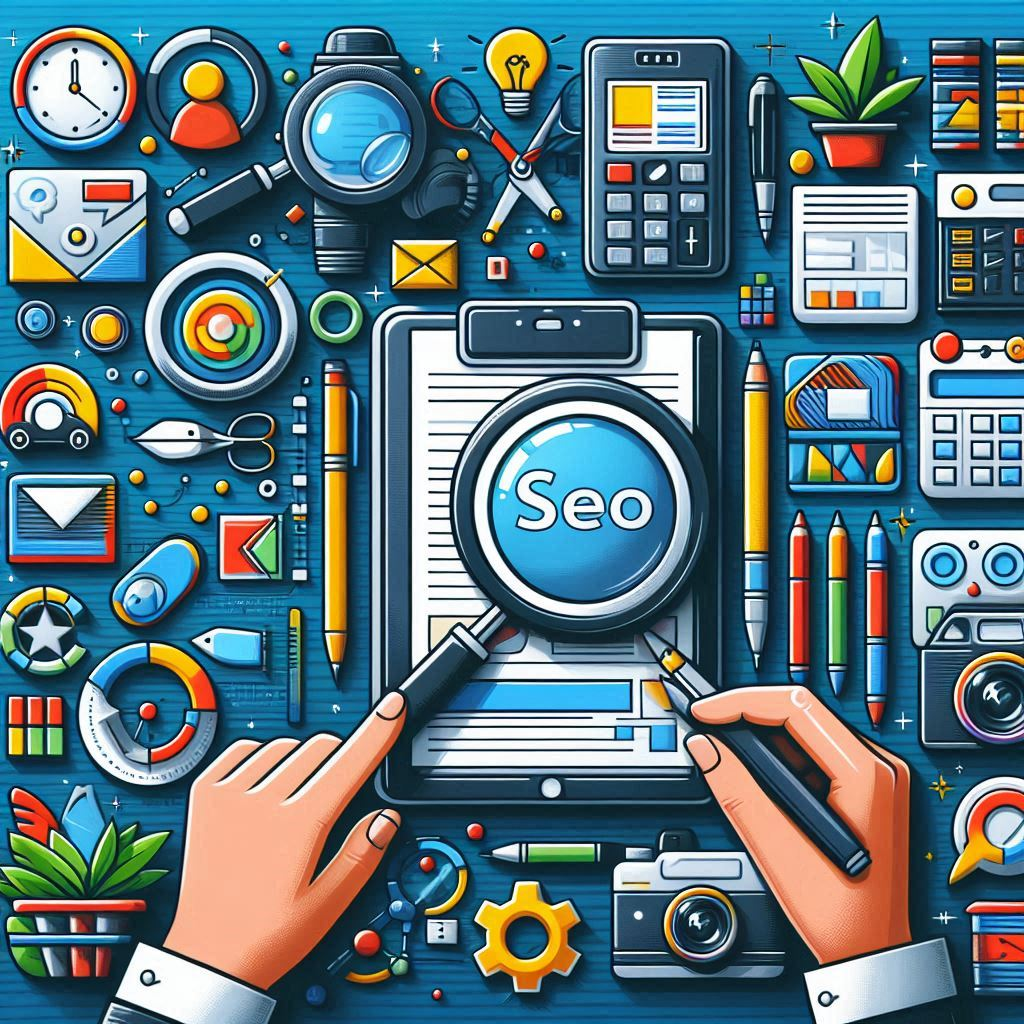
The Role of Personalization in SEO: Creating Custom Experiences for Users
In today’s digital world, where we’re constantly bombarded with information and our attention spans are shorter than ever, personalization has become a key part of SEO (Search Engine Optimization). By personalization, we mean crafting user experiences that fit individual preferences and needs, making users feel valued and engaged. In this blog post, we’ll dive into why personalization is so important for SEO, look at the benefits it brings, and share some strategies for creating custom experiences that resonate with users.
Understanding Personalization in SEO
Personalization in SEO refers to the practice of customizing digital content to cater to the unique preferences, behaviors, and needs of individual users. This approach contrasts with the traditional one-size-fits-all strategy, where the same content is presented to all users regardless of their interests or previous interactions. Personalization can be achieved through various methods, including user data analysis, machine learning algorithms, and AI-powered tools.
The Importance of Personalization in SEO
- Enhanced User Experience: Personalization significantly improves the user experience by presenting content that is relevant and engaging. When users find content that aligns with their interests and needs, they are more likely to stay longer on the site, explore more pages, and engage with the content.
- Increased Engagement and Conversion Rates: Personalized content fosters higher engagement rates as users are more likely to interact with content that resonates with them. This, in turn, leads to higher conversion rates. When users receive content tailored to their preferences, they are more inclined to take desired actions, such as making a purchase or signing up for a newsletter.
- Improved SEO Rankings: Search engines like Google prioritize user experience in their ranking algorithms. Websites that offer personalized experiences tend to have lower bounce rates and higher engagement metrics, which can positively impact SEO rankings. By focusing on personalization, businesses can improve their search engine visibility and attract more organic traffic.
- Customer Retention and Loyalty: Personalization helps in building stronger relationships with users. When users feel understood and valued, they are more likely to return to the website and become loyal customers. This long-term engagement is beneficial for sustaining traffic and maintaining a loyal customer base.
Strategies for Implementing Personalization in SEO
- Utilize User Data and Analytics: The foundation of effective personalization lies in understanding the user. Utilize web analytics tools to gather data on user behavior, preferences, and interactions. Analyzing metrics such as page views, click-through rates, and time spent on pages can provide valuable insights into what users are interested in.
- Segment Your Audience: Not all users are the same, and segmentation allows for more targeted personalization. Divide your audience into segments based on criteria such as demographics, browsing behavior, purchase history, and geographic location. This enables you to create tailored content and marketing campaigns for each segment.
- Dynamic Content Delivery: Implement dynamic content delivery systems that automatically adjust the content displayed based on user preferences and behavior. For instance, an e-commerce website can show personalized product recommendations based on a user’s previous browsing history and purchases.
- Leverage AI and Machine Learning: AI and machine learning algorithms can analyze vast amounts of data to identify patterns and predict user behavior. These technologies can help in delivering highly personalized experiences by recommending content, products, or services that match individual user preferences.
- Personalized Email Campaigns: Email marketing remains a powerful tool for personalization. Use personalized subject lines, content, and offers in your email campaigns to increase open rates and engagement. Segmented email lists ensure that users receive relevant information, enhancing the effectiveness of your campaigns.
- Customized Landing Pages: Create customized landing pages that cater to different segments of your audience. Personalized landing pages can address the specific needs and interests of users, increasing the likelihood of conversion. For example, a fitness website can have different landing pages for users interested in weight loss, muscle building, or yoga.
- Interactive and Engaging Content: Develop interactive content such as quizzes, surveys, and calculators that allow users to engage actively. This not only provides a personalized experience but also helps in gathering more data about user preferences and needs.
- Local SEO and Geotargeting: Personalize content based on the geographic location of users. Local SEO and geotargeting can help in delivering location-specific information, offers, and services. For instance, a restaurant can show different menus or promotions based on the user’s location.
- Behavioral Targeting: Use behavioral targeting to personalize content based on user actions and interactions on your website. For example, if a user frequently visits a particular category on an e-commerce site, highlight products from that category on the homepage or in personalized recommendations.
- A/B Testing and Optimization: Continuously test and optimize your personalization strategies through A/B testing. Experiment with different personalized elements and analyze their impact on user engagement and conversion rates. This iterative process helps in refining your approach and maximizing the effectiveness of personalization.

Challenges and Considerations
While personalization offers numerous benefits, it also comes with challenges and considerations:
- Privacy Concerns: Collecting and using user data for personalization raises privacy concerns. It is essential to be transparent about data collection practices and ensure compliance with data protection regulations such as GDPR and CCPA. Providing users with options to control their data and privacy settings can build trust and alleviate concerns.
- Data Management: Effective personalization requires managing vast amounts of data. Ensuring the accuracy, security, and proper use of data is crucial. Investing in robust data management systems and technologies can help in handling data efficiently.
- Resource Intensive: Implementing personalized experiences can be resource-intensive in terms of time, effort, and technology. Businesses need to evaluate the cost-benefit ratio and allocate resources effectively to achieve the desired outcomes.
- Avoiding Over-Personalization: While personalization is beneficial, over-personalization can have adverse effects. Bombarding users with excessively personalized content or offers can lead to a sense of intrusion and annoyance. Striking the right balance is key to maintaining a positive user experience.
Case Studies and Examples
To illustrate the impact of personalization in SEO, let’s explore a few real-world examples:
- Amazon: Amazon is a prime example of effective personalization. The e-commerce giant uses advanced algorithms to provide personalized product recommendations based on user behavior, purchase history, and browsing patterns. This personalized approach has significantly contributed to Amazon’s success in driving sales and customer loyalty.
- Netflix: Netflix excels in content personalization. The streaming service uses machine learning algorithms to analyze user preferences and viewing history, recommending shows and movies tailored to individual tastes. This personalized experience keeps users engaged and encourages them to explore more content.
- Spotify: Spotify’s personalized playlists, such as Discover Weekly and Release Radar, offer users a customized music experience. By analyzing listening habits and preferences, Spotify curates playlists that resonate with individual users, enhancing their overall experience and retention.
Future Trends in Personalization and SEO
The future of personalization in SEO is promising, with several trends set to shape the landscape:
- Voice Search and Personal Assistants: The rise of voice search and personal assistants like Alexa and Siri will drive the need for more personalized and conversational SEO strategies. Businesses will need to optimize content for voice queries and ensure personalized responses.
- AI and Predictive Analytics: Advancements in AI and predictive analytics will enable even more precise personalization. AI-powered tools will analyze user data in real-time, delivering hyper-personalized experiences that anticipate user needs and preferences.
- Augmented Reality (AR) and Virtual Reality (VR): AR and VR technologies offer immersive and personalized experiences. Businesses can leverage these technologies to create interactive and customized content, enhancing user engagement and satisfaction.
- Hyper-Personalization: Hyper-personalization goes beyond traditional personalization by using real-time data and AI to deliver highly individualized experiences. This approach will become increasingly important as users expect more tailored interactions.
Abstract :
Personalization in SEO is no longer a luxury but a necessity for businesses aiming to thrive in the digital age. By creating custom experiences for users, businesses can enhance user satisfaction, increase engagement, and improve SEO rankings. Implementing effective personalization strategies requires a deep understanding of user data, advanced technologies, and a commitment to delivering value. As personalization continues to evolve, businesses that embrace this approach will be well-positioned to succeed in the competitive digital landscape.

Hey people!!!!!
Good mood and good luck to everyone!!!!!